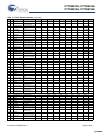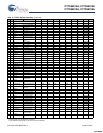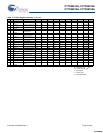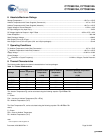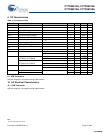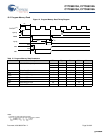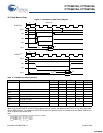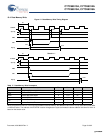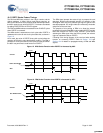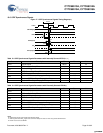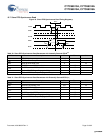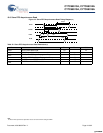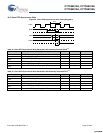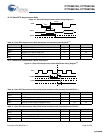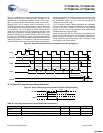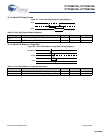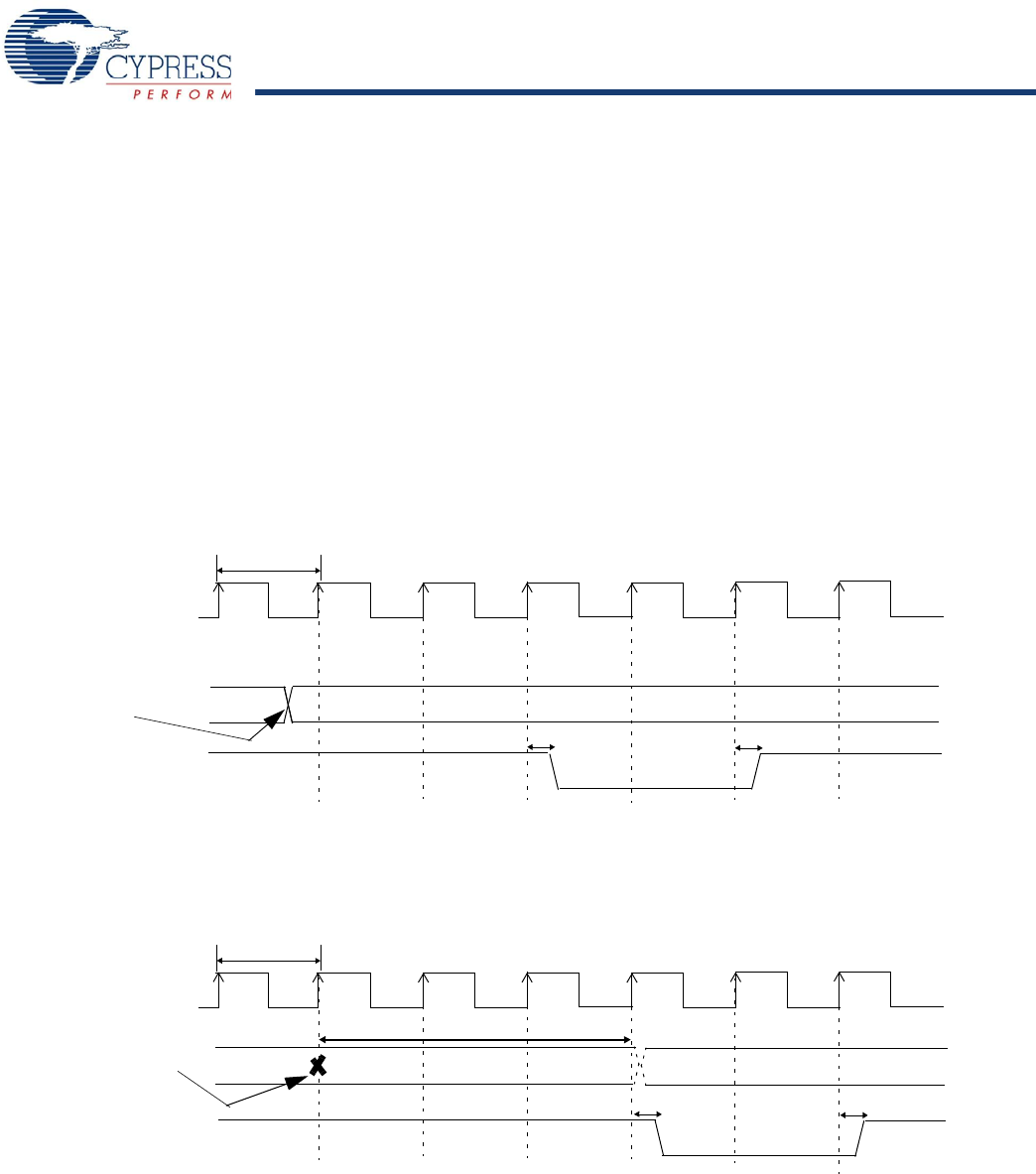
CY7C68013A, CY7C68014A
CY7C68015A, CY7C68016A
Document #: 38-08032 Rev. *L Page 41 of 62
10.5 PORTC Strobe Feature Timings
The RD# and WR# are present in the 100-pin version and the
128-pin package. In these 100-pin and 128-pin versions, an
8051 control bit can be set to pulse the RD# and WR# pins when
the 8051 reads from or writes to PORTC. This feature is enabled
by setting PORTCSTB bit in CPUCS register.
The RD# and WR# strobes are asserted for two CLKOUT cycles
when PORTC is accessed.
The WR# strobe is asserted two clock cycles after PORTC is
updated and is active for two clock cycles after that, as shown in
Figure 15.
As for read, the value of PORTC three clock cycles before the
assertion of RD# is the value that the 8051 reads in. The RD# is
pulsed for 2 clock cycles after 3 clock cycles from the point when
the 8051 has performed a read function on PORTC.
The RD# signal prompts the external logic to prepare the next
data byte. Nothing gets sampled internally on assertion of the
RD# signal itself, it is just a prefetch type signal to get the next
data byte prepared. So, using it with that in mind easily meets the
setup time to the next read.
The purpose of this pulsing of RD# is to allow the external
peripheral to know that the 8051 is done reading PORTC and the
data was latched into PORTC three CLKOUT cycles before
asserting the RD# signal. After the RD# is pulsed, the external
logic can update the data on PORTC.
Following is the timing diagram of the read and write strobing
function on accessing PORTC. Refer to Section 10.3 and
Section 10.4 for details on propagation delay of RD# and WR#
signals.
Figure 15. WR# Strobe Function when PORTC is Accessed by 8051
Figure 16. RD# Strobe Function when PORTC is Accessed by 8051
CLKOUT
WR#
t
CLKOUT
PORTC IS UPDATED
t
STBL
t
STBH
CLKOUT
t
CLKOUT
DATA MUST BE HELD FOR 3 CLK CYLCES
DATA CAN BE UPDATED BY EXTERNAL LOGIC
8051 READS PORTC
RD#
t
STBL
t
STBH
[+] Feedback [+] Feedback



